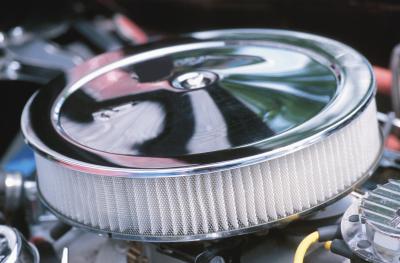
Though it's among the simplest components in the engine bay, the intake air filter is extremely important to a vehicle's performance. At the head of the intake system, the air filter is responsible for filtering harmful dirt and debris while allowing ample airflow into the engine for combustion. A dirty or clogged air filter can restrict the engine's airflow, thereby decreasing the amount of air available for combustion while also throwing off the air-fuel ratio. These conditions will reduce performance in acceleration and fuel economy.
Engines generate power by pulling in air and combining it with a fuel mixture, after which it is compressed and combusted. In short, this means the easier an engine can breathe in air, the more power it will be able to generate. That's why a dirty or clogged air filter will cause the engine to experience a slight loss of horsepower. In extreme cases, a clogged filter will negatively affect fuel economy even when the engine is under light loads, such as in highway cruising. However, this effect is minimized by electronic fuel injection, and therefore decreased gas mileage is generally noticed only with carbureted engines.
During the intake cycle of the combustion process, the pistons move down the cylinder, allowing it to fill with air and fuel. Since dirty air filters inhibit airflow, the vacuum pressure resulting from the cylinder's downward stroke will pull in slightly less air. With less air available for combustion, the engine will generate less power, assuming the air filter is restricted to the point that it becomes a bottleneck in the intake track.
As the fiber of the air filter becomes worn out, it may allow small amounts of dirt and debris to enter the engine. Given the precise clearances and high levels of heat and pressure in the cylinders, even minor amounts of debris can cause extensive damage to internal components over time. If the filter is extremely worn, there's the additional risk of the engine ingesting pieces of fiber that break free from the filter.
On most vehicles, inspecting and/or replacing the air filter requires little mechanical knowledge. The air filter is generally located inside the plastic intake box, connected to the engine throttle body. To access the filter, remove the spring-loaded clips and/or screws that secure the lid to the air box. You can then remove the filter by hand and replace it with a new unit if necessary. Refer to the vehicle owner's manual if you are unsure of the exact location of the air filter or replacement procedure. Most owner's manuals also include a suggested maintenance interval that indicates the mileage at which the filter should be inspected.